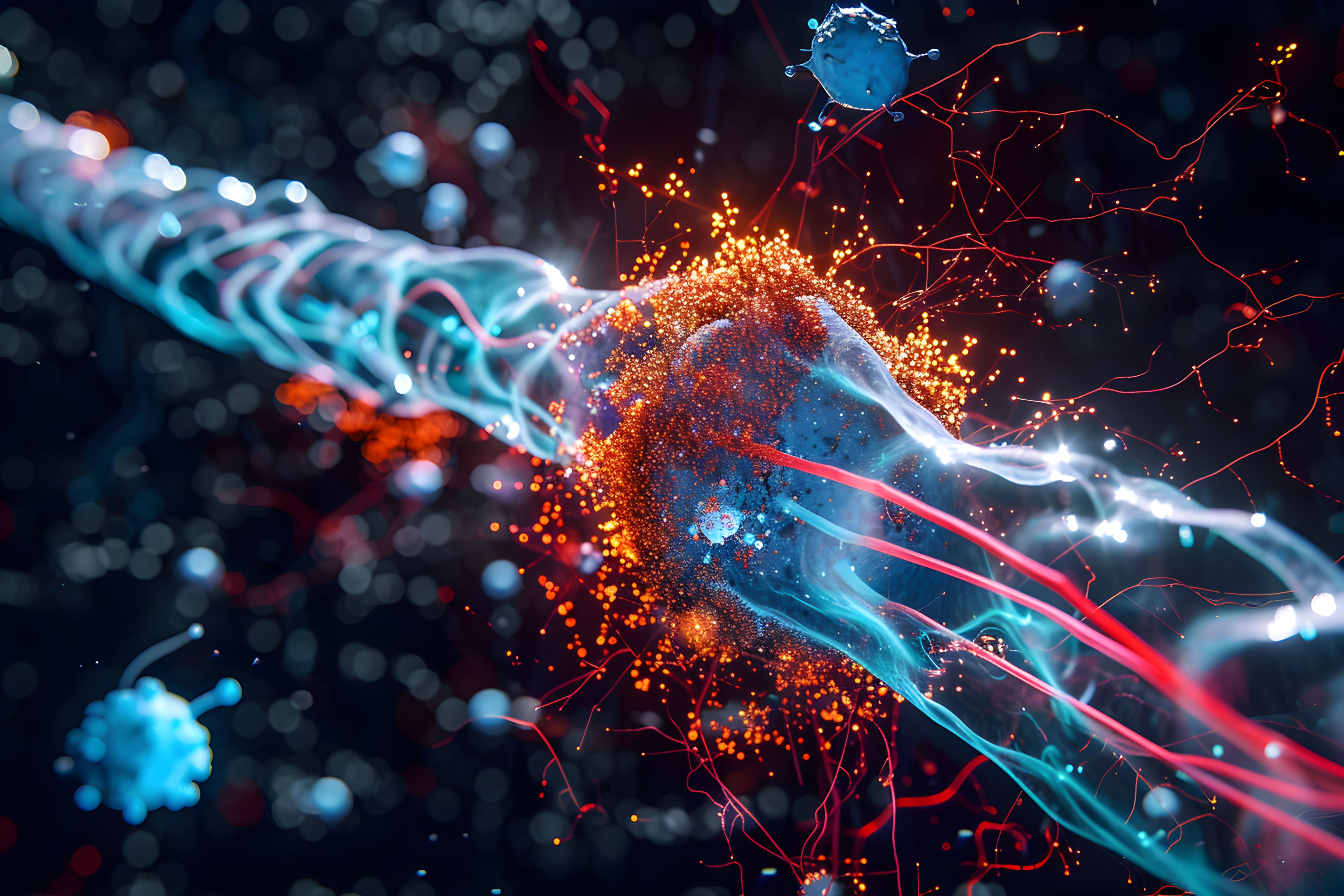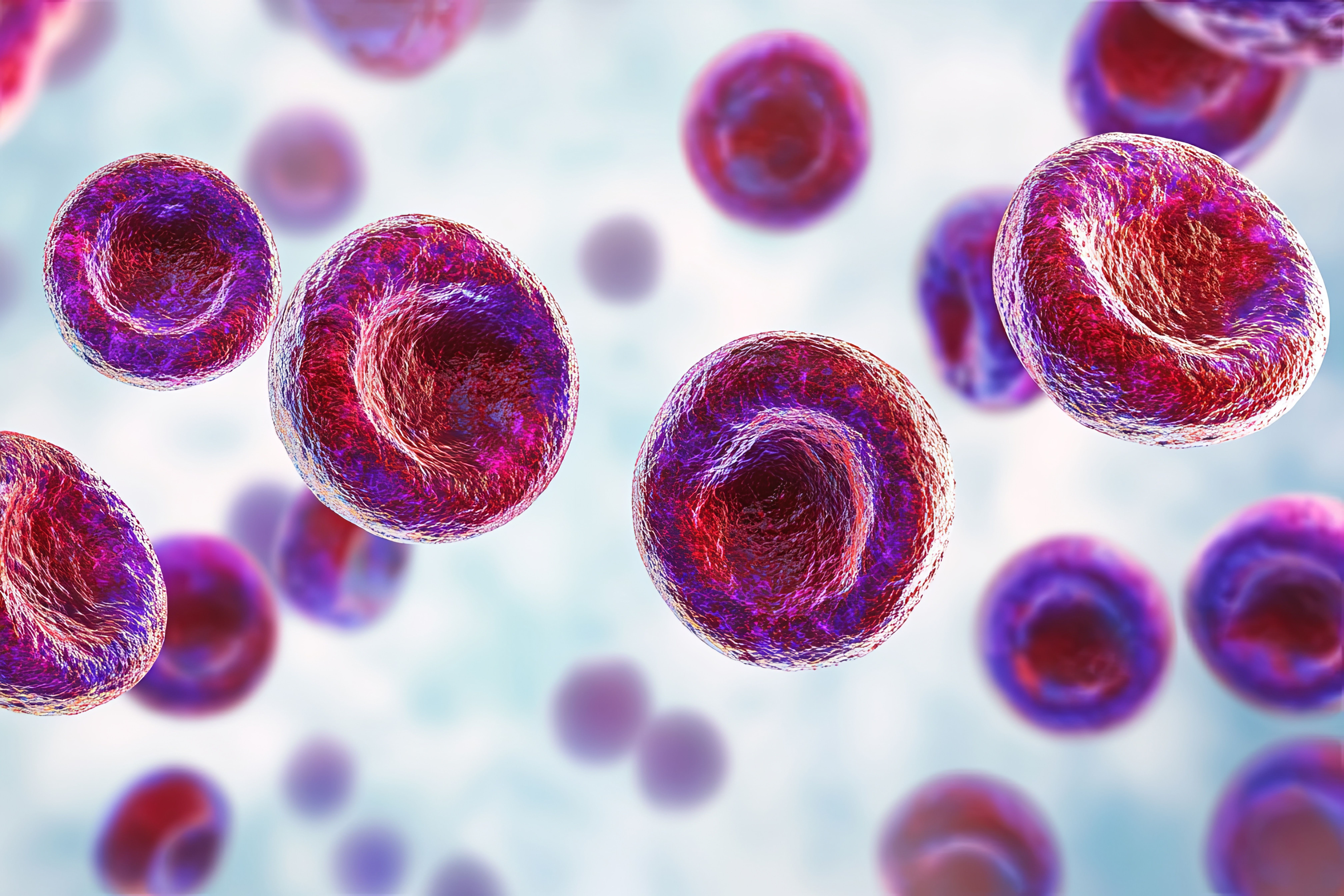News
Article
Serum Neurofilament Light Changes Not Always Apparent in Active RRMS, Study Finds
Author(s):
A prospective study found evidence of serum neurofilament light (sNfL) level increases in patients affected by active forms of relapsing-remitting multiple sclerosis (RRMS); however, these findings were not significant enough to suggest sNfL measurements replace clinical or MRI monitoring of disease activity.
In a recent study published in Multiple Sclerosis Journal, 20% of patients with relapsing-remitting multiple sclerosis (RRMS) did not exhibit changes in serum neurofilament light (sNfL) levels during disease activity, demonstrating that sNfL should not be used in place of clinical and MRI measures.1
Demyelination in MS Concept | image credit: Aiden - stock.adobe.com

As the present authors detail, NfL has emerged as a significant biomarker for neurodegeneration and axonal damage in MS. Measurements of sNFL have been the focus of many clinical trials, often measured in cerebral spinal fluid (CSF), due to its potential to predict treatment responses and disease severity. For example, 2 recent studies published in April and May 2024 focused on sNfL levels to demonstrate how these changes can assist in differentiating patients with MS from those with somatoform disorders2 and be associated with better apheresis outcomes.3 This biomarker has shown much promise for furthering clinical understandings of MS’s pathophysiology; however, as the current authors express, the value of monitoring sNfL deserves more attention as it has not sufficiently been studied in the realm of RRMS.1
To expand clinical knowledge on the diagnostic properties of sNfL and its implications for disease activity, researchers conducted a single-center, prospective study to assess patients with active RRMS or clinically isolated syndrome (CIS). Participants were enduring a current relapse either with or without a contrast-enhancing lesion (CEL). This study was employed at the Sahlgrenska University Hospital of Gothenburg, Sweden, and included 44 patients (4 with CIS, 40 with RRMS) between September 2017 and January 2021. These patients were compared with 66 patients with RRMS who were previously treated with natalizumab (controls). At baseline, 24 weeks, and 48 weeks, clinical assessments were performed through MRI brain scans and the Expanded Disability Status Scale (EDSS). Additionally, serum concentrations were analyzed at weeks 0, 2, 4, 8 ,16, 24, and 48.
Of the 44 participants, 30% (n = 13) had a relapse without an CEL, 61% (n = 27) had a relapse and an CEL, and 9% (n = 4) had an CEL but were without relapse.
At baseline, patients’ median sNfL concentration was 12.4 ng/L. These levels increased to 14.6 ng/L after 2 weeks, (P = .001) but thereafter gently declined to 9.1 ng/L at week 48 (P = .003). In the 40 patients with clinical relapse, researchers witnessed sNfL levels reach their highest at a median of 5.5 weeks after symptom onset. Some of the patients had received treatment with a disease-modifying therapy or high-dose methylprednisolone; their sNfL levels were not significantly different from those of patients who were untreated.
Patients enduring relapse who had an CEL were reported to have a significantly higher sNfL concentration than patients enduring relapse but no CEL (median difference of 5.3 ng/L; P = .045).
“In this prospective study, active RRMS had repeated determinations of sNfL at intervals that are feasible for assessment of disease activity in clinical practice,” the authors reflected. However, because 1 out of 5 patients in this cohort did not exhibit sNfL increases during active disease, they concluded, “Our data do not support that sNfL can replace clinical and MRI measures for monitoring disease activity. However, in RRMS patients who achieved NEDA [no evidence of disease activity] under highly effective DMT [disease-modifying therapy], sNfL concentrations were low and stable, suggesting a potential role for sNfL for long-term monitoring of inflammatory disease activity.”
References
1. Johnsson M, Stenberg YT, Farman HH, et al. Serum neurofilament light for detecting disease activity in individual patients in multiple sclerosis: a 48-week prospective single-center study. Mult Scler. 2024;30(6):664-673. doi:10.1177/13524585241237388
2. Koerbel K, Maiworm M, Schaller-Paule M, et al. Evaluating the utility of serum NfL, GFAP, UCHL1 and tTAU as estimates of CSF levels and diagnostic instrument in neuroinflammation and multiple sclerosis. Mult Scler Relat Disord. 2024;87:105644. doi:10.1016/j.msard.2024.105644
3. Vardakas I, Dorst J, Huss A, et al. Serum neurofilament light chain and glial fibrillary acidic protein for predicting response to apheresis in steroid-refractory multiple sclerosis relapses. Eur J Neurol. Published online May 3, 2024. doi:10.1111/ene.16323
Newsletter
Stay ahead of policy, cost, and value—subscribe to AJMC for expert insights at the intersection of clinical care and health economics.




